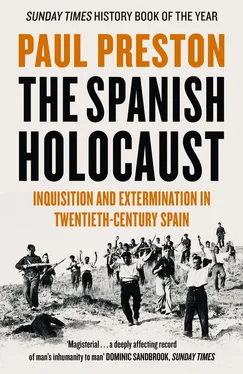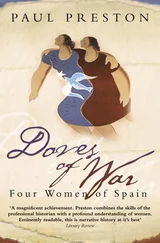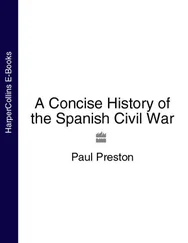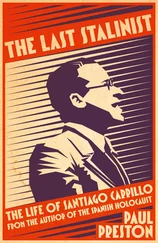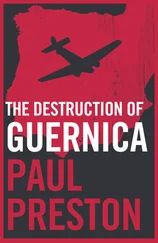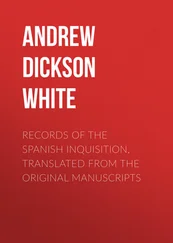During the cereal harvest in Jaén, the owners brought in non-unionized labour from Galicia and elsewhere. This scab labour was protected by the Civil Guard, which also colluded as the owners armed their own estate guards. When the owners in Badajoz bypassed local unions by importing cheap labour from Portugal or using machinery, migrant labourers were assaulted and machines sabotaged. With the harvest on the verge of ruin, the local authorities arranged for it to be brought in by non-union labour under police protection. Seeing this as an affront to their property rights, the owners refused the wages demanded and ordered their armed guards to expel the workers from the fields. In some cases, crops were destroyed by the owners to thwart the workers. The Association of Rural Estate-Owners claimed that landowners were faced with annihilation or suicide. In Carrión de los Condes to the north of Palencia, the president of the Casa del Pueblo was hanged by local landowners. In many parts of Córdoba, the workers’ organizations tried to impose the strict rota of workers to be placed on estates. In Palma del Río, there was serious conflict when one of the principal landowners, Félix Moreno Ardanuy, refused to pay the workers ‘placed’ on his estates. He was imprisoned and ordered to pay the 121,500 pesetas owed. When he refused, the town council confiscated 2,450 of his pigs, cows and horses. His son and other local Falangists then rioted in the town. When the military rebels took the town, his revenge would be ferocious. In Palenciana, in the south of Córdoba, a guard interrupted a meeting in the Casa del Pueblo and attempted to arrest the speaker. A scuffle ensued and he was stabbed to death. His comrades opened fire, killing one worker and wounding three more. 65
In the province of Seville, the Civil Governor, José María Varela Rendueles, noticed that landowners called for the Civil Guard to expel those who had invaded estates only after they had brought in the harvest. Thus, when the Civil Guard had done its work, the owners had had their crops collected free of charge. 66Conflict between the forcibly imposed workers and the landowners in Seville was particularly acute. The smaller towns of fewer than 10,000 inhabitants were dominated by the FNTT, while the larger ones were in the hands of the CNT. In one of the latter, Lebrija, on 23 April, anarchist labourers, protesting that they had not been paid enough, were confronted by the local Civil Guard commander, Lieutenant Francisco López Cepero. Stones were thrown, the commander fell and he was beaten to death by the mob. This was the prelude to the burning down of two churches, three convents, the headquarters of Acción Popular and the houses of several landowners. 67The conflict in the countryside was utterly disorganized and lacked any co-ordinated revolutionary plan for the seizure of power. That, however, did not diminish the alarm of the rural middle and upper classes.
Violence was not confined to rural areas. Indeed, it is unlikely that the situation in the countryside would alone have secured sufficient support for a military coup. The plotters needed to mobilize urban popular opinion and that required the provocation of violence in the streets, especially those of Madrid. The capital, where diplomats and newspaper correspondents were stationed, would be used to convince international opinion that all of Spain was a victim of uncontrolled violence. Provocation was to be undertaken by the Falange, whose leader José Antonio Primo de Rivera had no inhibitions about violence against the left. Irked by the ebullience of Madrid workers celebrating the Popular Front victory in Madrid, he commented to his friend Dionisio Ridruejo: ‘With a couple of good marksmen, a demonstration like that can be dissolved in ten minutes.’ José Antonio resented the fact that it was taken for granted that the Falange would accept ‘the role of guerrillas or the light cavalry of other craftier parties’. As he said to Ridruejo, ‘Let’s hope that they finally wise up. We are ready to take the risks, no? Well, let them, at least, provide the money.’ 68
In fact, the undermining of government authority by street violence went hand in hand with the military conspiracy for which it provided the justification. Having gained only 0.4 per cent of the vote in the February elections (about 45,000 votes), it was obvious that the Falange had little popular support. José Antonio was already committed to a violent seizure of power and, as his comments to Ridruejo showed, he was ready to contribute a Falangist strategy of tension to the wider conspiracy. 69Within a month of the elections, there were armed attacks in Madrid on prominent left-wing and liberal politicians. Numerous incidents were provoked in which Falangists and left-wingers fought in the streets of the capital. On 11 March, a Falangist law student, Juan José Olano, was shot dead. The following day, in reprisal, a three-man Falangist hit squad, almost certainly acting with José Antonio’s knowledge, tried to kill the Socialist law professor Luis Jiménez Asúa. Jiménez Asúa survived but his police bodyguard was killed. On the day of his funeral, the left reacted by setting fire to two churches and the offices of the Renovación Española newspaper La Nación, which belonged to one of the Falange’s backers, Manuel Delgado Barreto. The consequence was that, on 14 March, the Director General of Security, José Alonso Mallol, ordered José Antonio and other members of the senior leadership of FE de las JONS to be arrested for illegal possession of weapons. 70
Azaña was shocked that Largo Caballero had expressed no concern about Jiménez Asúa – a stark indication of Socialist divisions. Nevertheless, in reprisal for José Antonio’s arrest, on 16 March, Largo Caballero’s house was fired upon by a Falangist terror squad. This prompted a cunning display of hypocrisy from Gil Robles. On 17 March, he went to see the Minister of the Interior, Amós Salvador, to protest about the disorder, citing the attack on Largo Caballero’s home as a symptom. The CEDA also tabled a debate on the subject in the Cortes, blaming the government and the left. 71Knowing that the army was not yet ready to seize power and aware that full-scale obstruction of Azaña’s government could only lead to an all-Socialist government, Gil Robles devoted his energies to building up the atmosphere of fear. The objective was that the middle classes, terrified by the spectre of disorder, would eventually turn to the army as their only saviour.
José Antonio was detained on a technicality because his involvement in the attempt on Jiménez Asúa’s life could not be proven. However, there is little doubt that he approved of it. The erstwhile leader of the Falange action squads, Juan Antonio Ansaldo, visited him in his Madrid prison, the Cárcel Modelo, to discuss plans to get the three would-be assassins out of Spain. Ansaldo got them to France, but they were arrested and extradited back to Spain. On 8 April, they were tried for the murder of the bodyguard and the attempted murder of Jiménez Asúa. Their leader, Alberto Ortega, was sentenced to twenty-five years’ imprisonment and his two accomplices to six years each. At the highest level of the Falange – which meant the imprisoned leadership – a decision was taken to respond with a revenge attack on the judge, Manuel Pedregal, who was shot dead on 13 April as a deadly warning to judges in any future trials of Falangists. 72On 12 April, José Antonio called off a plan elaborated by the Falange action squads to murder Largo Caballero at the hospital where his wife was terminally ill. Since he visited her without his escort, it was regarded as simple for Falangists disguised as medical staff to kill him in the deserted corridor outside her room. José Antonio explained to a friend that his caution derived from the belief that the Falange would be destroyed by the consequent left-wing backlash. He was also uneasy about the public impact of the murder of a sixty-six-year-old man visiting his dying wife. 73
Читать дальше
